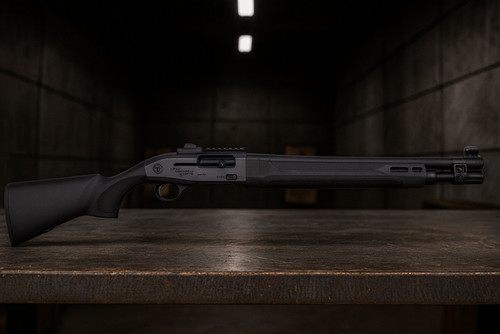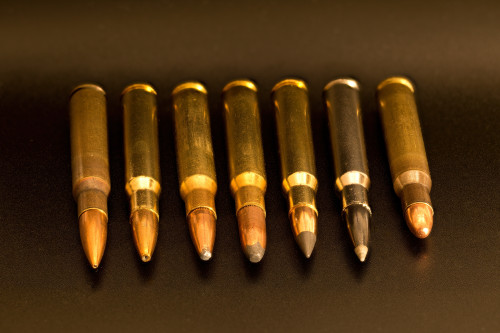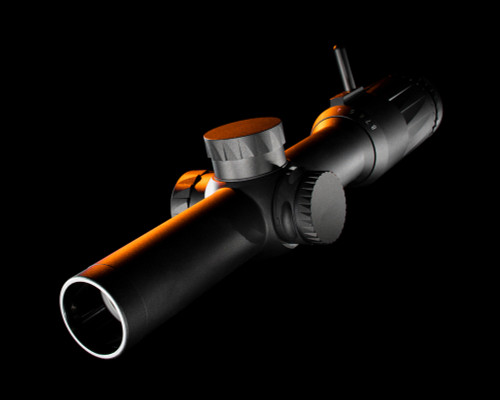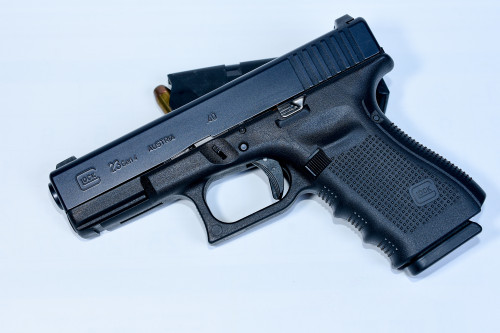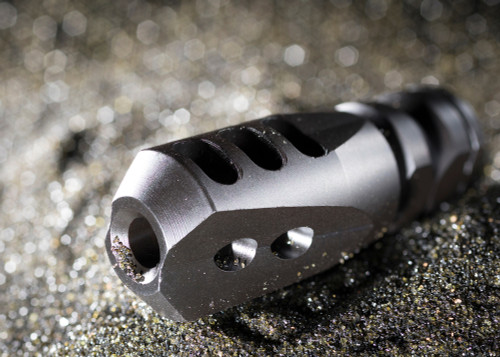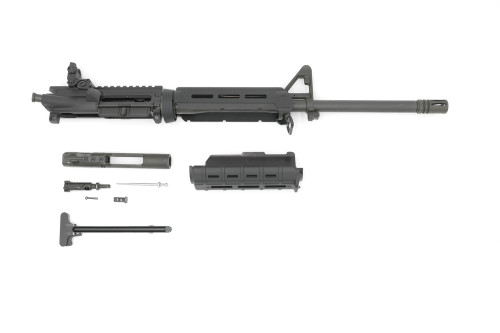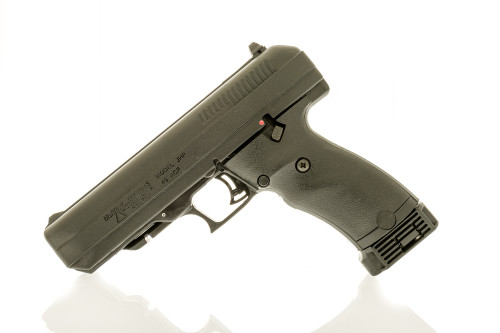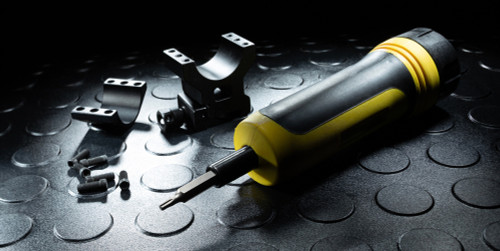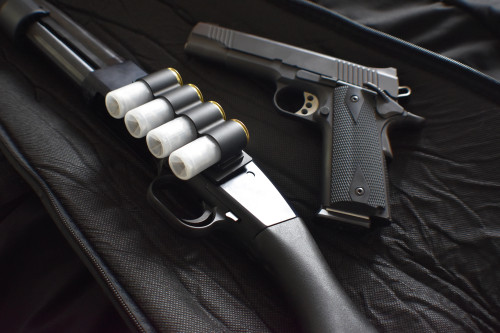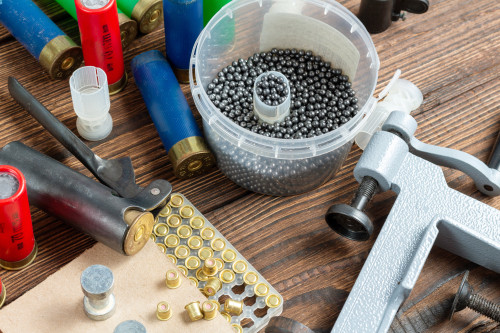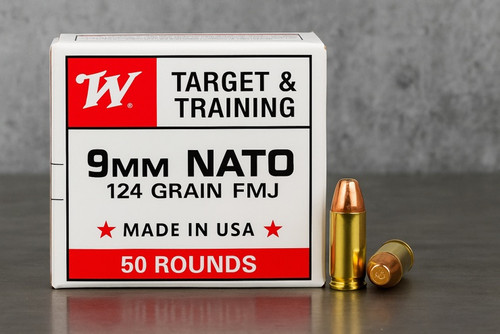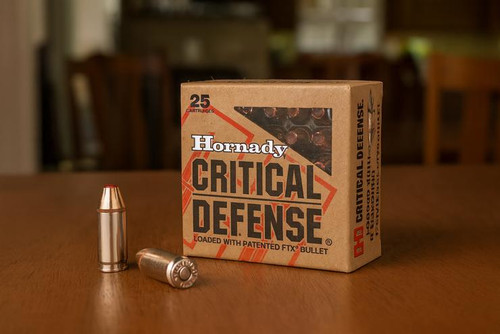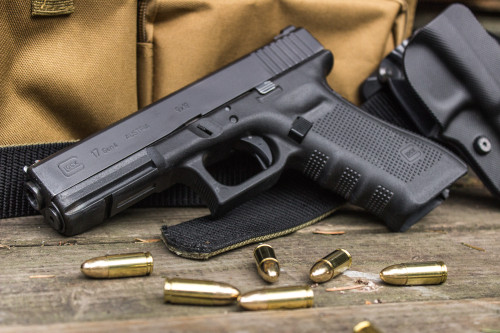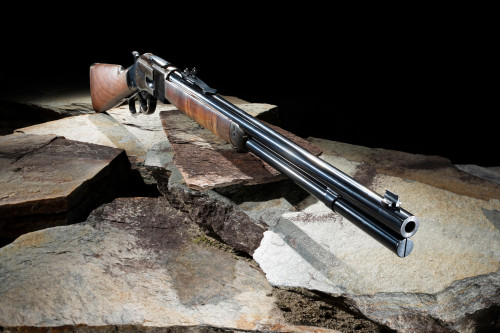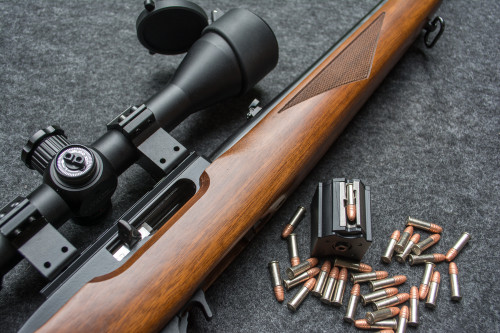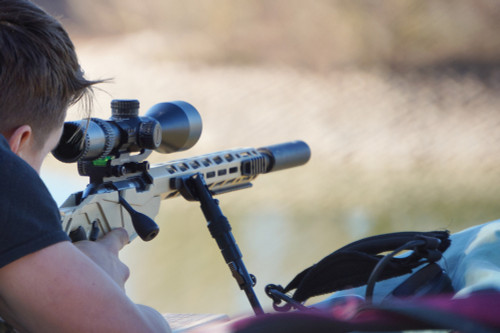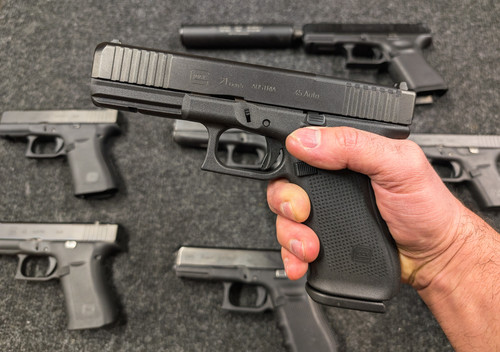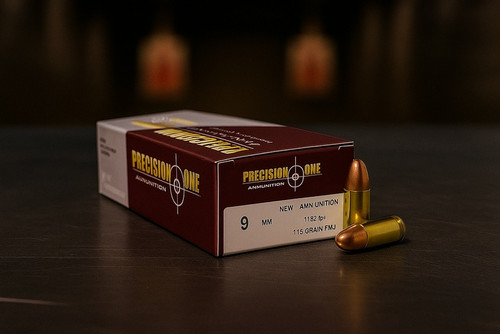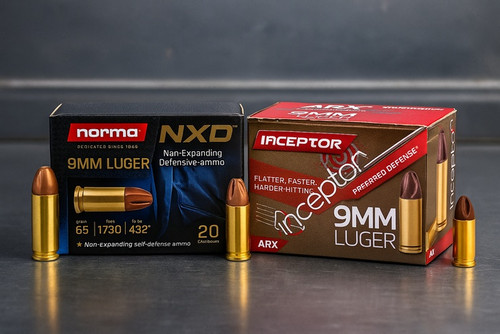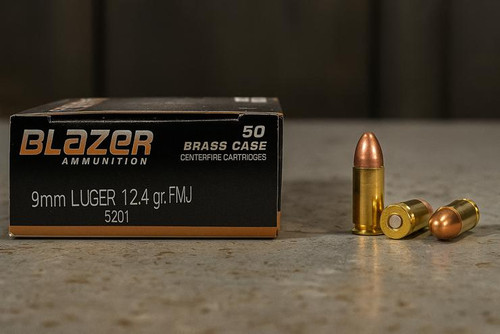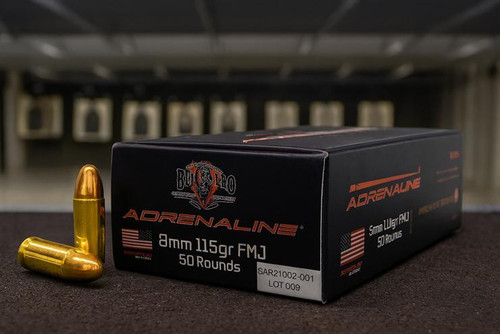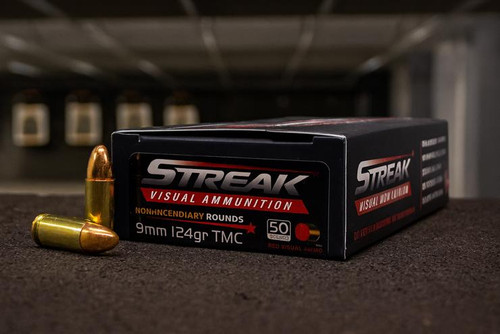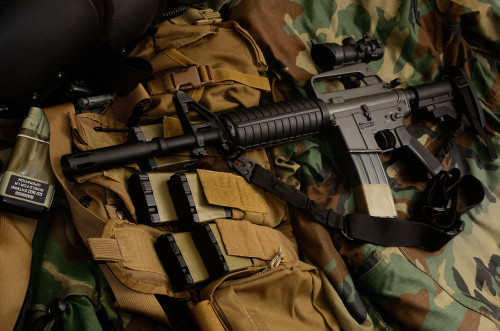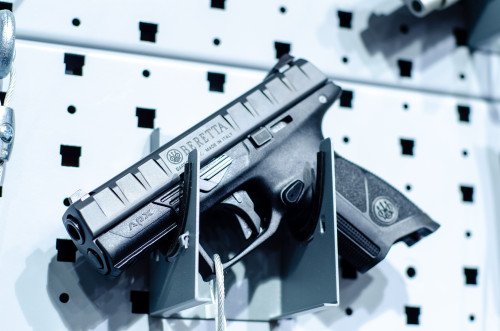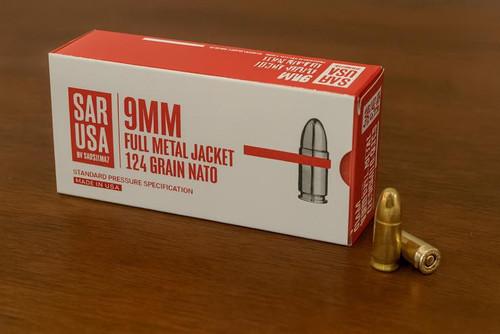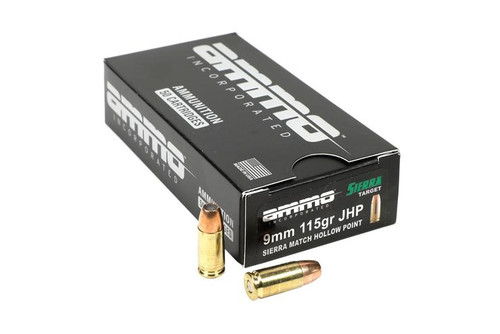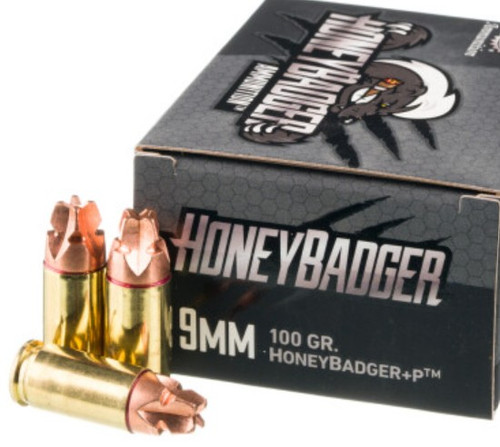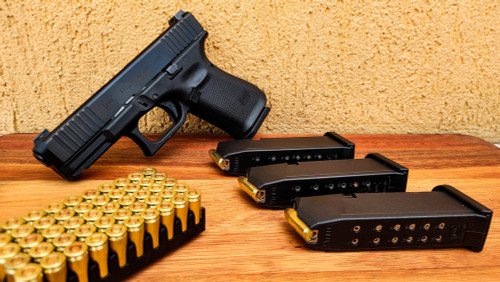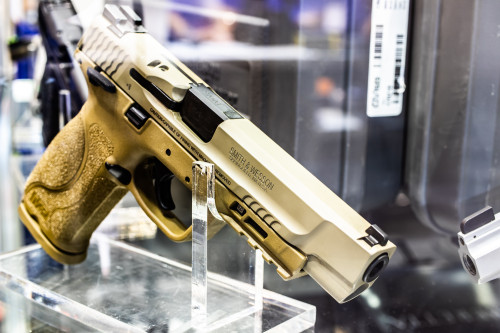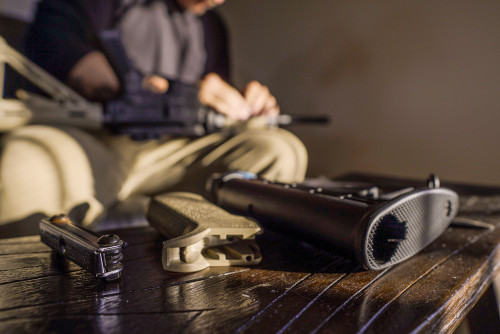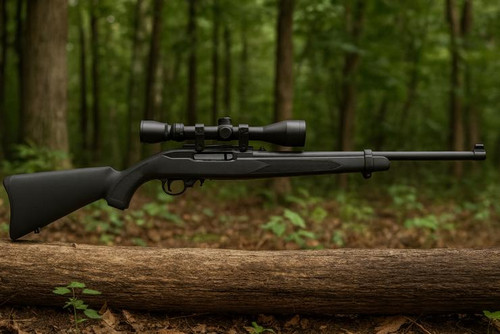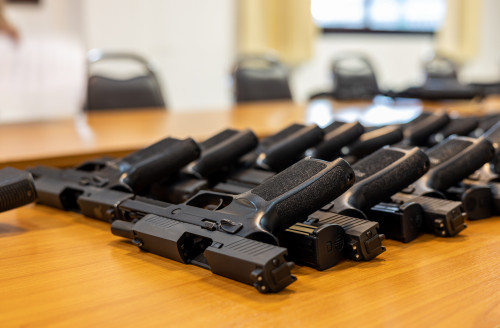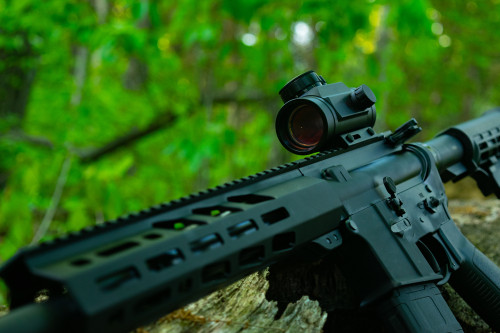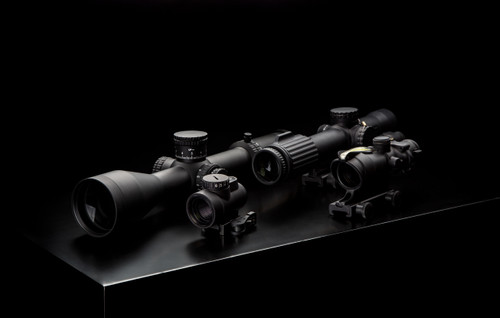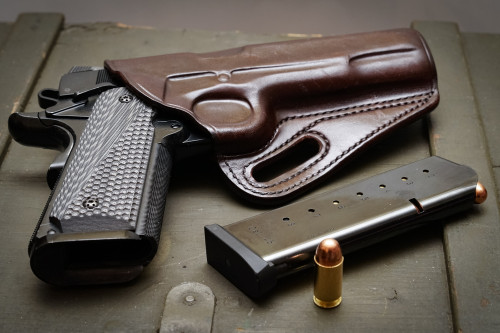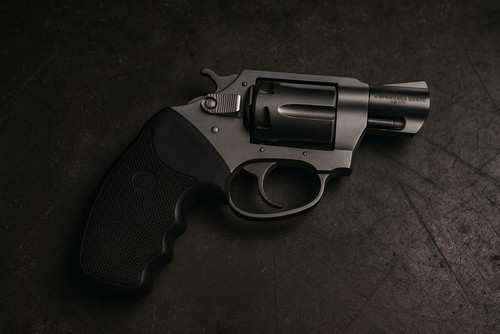Quick Answer
An AR-15 Dissipator is a 16-inch AR-15 setup with a rifle-length sight radius. It places the front sight at the rifle position while using either a true rifle-length gas system (original “dissy”) or a mid-/carbine-length gas system with a dummy FSB (“mock dissy”). It offers a rifle-length sight radius and — in true rifle-gas versions — a smoother recoil impulse, but early true dissipators often had cycling/reliability problems. Modern “mock” dissipators with mid-/carbine-length gas generally solve reliability issues but do not reduce recoil compared to standard ARs. This makes it a niche option for shooters who value classic looks and iron-sight performance.
Key Takeaways
- AR-15 Dissipator = 16-inch barrel with rifle-length front sight.
- The concept traces back to Colt’s Model 605 from the Vietnam era.
- Bushmaster popularized the "Dissipator" name.
- Early function issues came from shortened dwell time.
- Modern models fixed problems with mid-length or enlarged gas ports.
- Best suited for shooters using iron sights or building retro clones.
Ask any veteran AR shooter, and they'll recall the oddball "Dissy" floating through gun history. It was born in the Vietnam jungle and later reborn by Bushmaster. It is still discussed today because it mixed practicality with controversy. Let us unpack why the AR-15 Dissipator still sparks debates decades later.
What Is an AR-15 Dissipator?
The term "dissipator" sounds like sci-fi, but it is down-to-earth. A dissipator, or "dissy," is an AR-15 with a 16-inch barrel that carries a rifle-length front sight post.
Why the strange name? Bushmaster coined the term when they created their version with heavy profile barrels and heat-reinforced handguards. These features helped dissipate heat and hence the name "Dissipator."
The basic idea behind the dissipator design combines two beneficial features: the maneuverability of a shorter barrel with the accuracy advantage of a longer sight radius. This mix of traits makes it stand out in the AR-15 family.
The Origins: From Colt to Bushmaster

The dissipator concept began in Vietnam when Colt created the Model 605. Special operations troops needed something shorter than the standard 20-inch M16 for jungle warfare. Colt's solution was simple. Colt cut 20-inch M16 barrels down to about 15 inches, keeping the rifle-length gas system.
But this created a problem. Shortening the barrel reduced what gun folks call "dwell time". This is the period when the bullet stays in the barrel after passing the gas port. With almost no dwell time, these early models had trouble cycling properly.
Historical photos from Vietnam show only very limited use of suppressed, shortened rifles. Some experimental Colt 605s (e.g., Colt/AF test guns) were fitted with suppressors, but this was not common issue gear. Some 605s were tested with suppressors, which incidentally improved function by adding back pressure.
Bushmaster later introduced civilian AR-15s actually named "Dissipator," which addressed the function issues by using a carbine-length gas system with a dummy front sight block at the rifle position.
Pros of the Dissipator
The dissipator design offers several advantages that explain its persistent appeal:
Smoother recoil impulse: On true rifle-gas dissipators that use an enlarged gas port (e.g., Del-Ton), the action runs less violently and recoil can feel softer with reduced muzzle rise; on most modern “mock dissipators” using mid-length or carbine gas, recoil is generally comparable to standard carbines.
Better sight radius: The front sight sits farther forward. It gives you more precision with iron sights.
Longer handguards: More real estate for your support hand and accessories.
Unique aesthetic: Dissipators have a distinct look that resembles an SBR (short-barreled rifle) without NFA paperwork.
Heat management: Original designs featured reinforced handguards to better handle barrel heat.
Control in close quarters: The reduced recoil and muzzle rise can make follow-up shots faster in tight spaces.
Cons of the Dissipator
No design comes without trade-offs, and the dissipator has several:
Weight concerns: The added mass from longer handguards and a dummy FSB is marginal—ounces, not pounds; expect it to feel slightly more front-heavy due to the longer handguards and dual blocks, but not meaningfully heavier overall.
Historical function issues: Original designs struggled with cycling due to shortened dwell time.
Limited advantage with optics: The longer sight radius benefit disappears when using red dots or scopes.
More complex setup: True dissipators require enlarged gas ports or other modifications to run properly.
Limited market options: Fewer manufacturers offer dissipator models compared to standard carbine designs.
Modern Dissipators
Today's market offers several approaches to the dissipator design. Most modern versions use a hidden gas block at the carbine or mid-length position with a non-functioning front sight block at the rifle position.
PSA (Palmetto State Armory) offers dissipator models with mid-length gas systems. These provide a good balance of function and form without the issues of the original design.
For purists, For purists, Del-Ton produces one of the few “true” dissipators on the market. Their version uses an actual rifle-length gas system with an enlarged gas port to solve the dwell-time problem, giving you both the look and the smooth-shooting benefits of a rifle-length system. That said, Del-Ton’s true dissipator enlarges the gas port for reliability, though it can still be more ammo-sensitive (and less forgiving) than mid-length mock designs.
Windham Weaponry also produces a dissipator model they call the "Dissipator M4," which features the classic carry handle and front sight post but uses a mock gas block system for improved function.
How to Run a Dissipator Effectively
If you're interested in a dissipator build, you have several options to ensure it runs well:
Adding a suppressor is one historical solution. Suppressors increase back pressure in the system, which can help overcome the reduced dwell time of a true dissipator. This method was actually used in Vietnam with the original Colt 605s.
The modern approach is opening up the gas port, similar to what's done on the military's Mk18 series rifles. Del-Ton uses this method in their dissipator. It creates good function despite the rifle-length gas system on a 16-inch barrel.
The easiest option is going with a "mock" dissipator that uses a mid-length or carbine gas system with a non-functioning front sight block. PSA and Windham Weaponry both take this approach. It gives you the look without the potential headaches.
Is the Dissipator Still Worth It ?
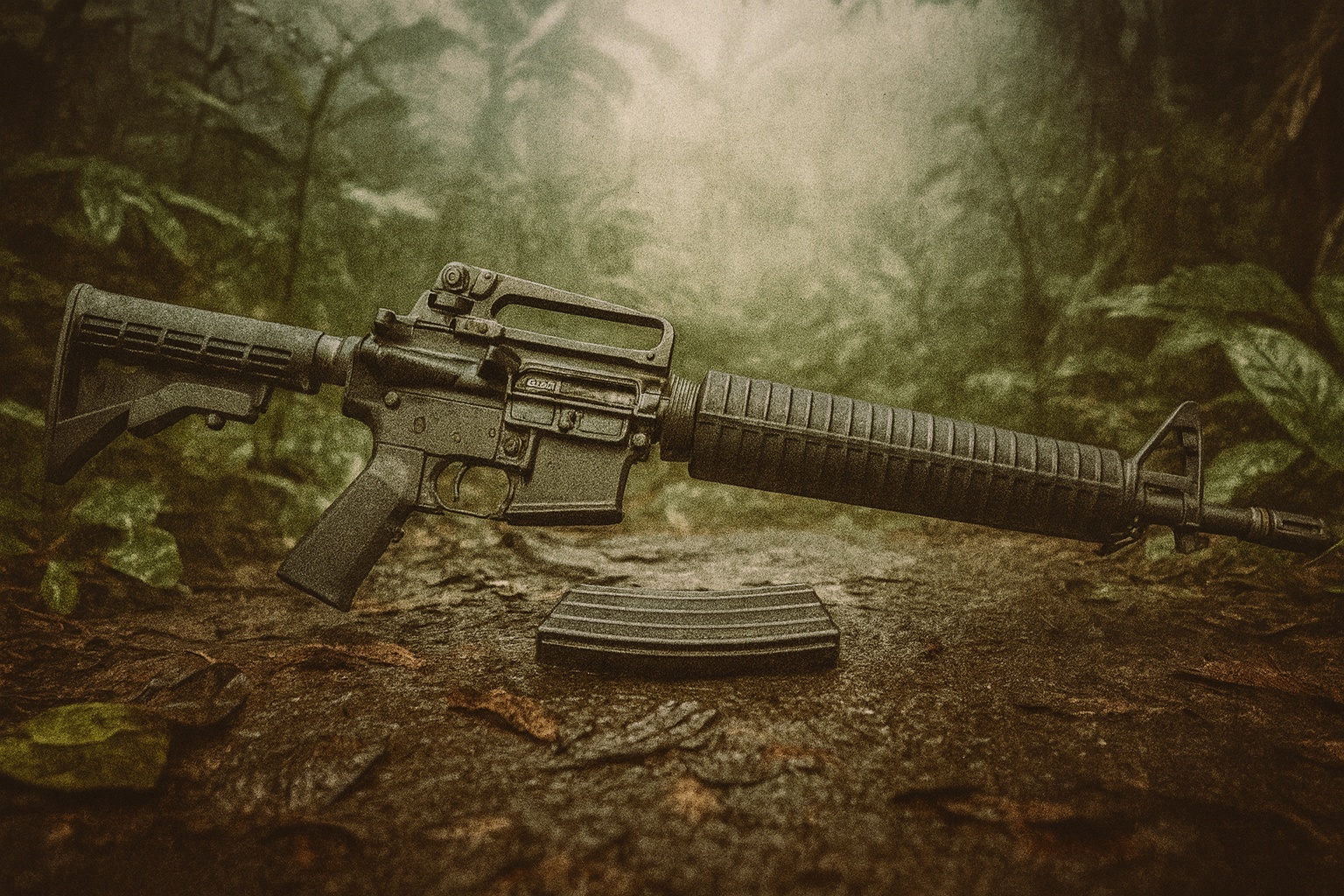
In an age of free-floating handguards, low-profile gas blocks, and optical sights, does the dissipator still have a place?
For most owners who use optics, probably not. The long sight radius does not matter when you use a red dot or scope.
But for those who value iron sights or want a retro-style rifle with historical appeal, the dissipator offers a unique mix not found in other AR configurations.
Clone builders and collectors still enjoy the distinct look and feel of a dissipator. There is appeal in owning a piece of AR-15 evolution that bridges the gap between original rifles and modern carbines.
The dissipator represents an interesting chapter in AR-15 development. It helped pave the way for the popular M4 platform we see today.
Conclusion
The dissipator design might be niche in today's market, but it gives a glimpse of the path to modern AR-15 carbines. Its blend of features continues to attract owners who value its historical significance and handling traits.
You can choose a true rifle-length gas system or a practical mid-length mock dissipator. These builds offer something different from the standard AR crowd. They remind us that innovation comes through experimentation. The first attempts were not ideal, yet lessons carried on.
Further reading: Still debating a build? Our full guide to whether you should Buy or Build an AR-15 dives into parts, tools, and real cost comparisons.
Frequently Asked Questions (FAQs)
Can I build my own AR-15 Dissipator?
Yes. You can build your own by starting with a 16-inch barrel and either using a rifle-length gas system with an enlarged gas port, which is a true dissipator, or installing a mid-length gas system with a non-functioning front sight block at the rifle position, which is a mock dissipator. The mock version is easier and more foolproof for first-time builders.
What's the difference between a "true" and "mock" dissipator?
A true dissipator has only one gas block and front sight at the rifle position with an enlarged gas port. A mock dissipator has a hidden, functioning gas block at carbine or mid-length position, plus a non-functioning front sight block at the rifle position. Mock dissipators are more common today because they are easier to get running properly.
Will a dissipator work with suppressors?
Absolutely—but not because they were the “original solution.” Suppressors were occasionally tested on Colt 605 rifles, and they improved function by adding back pressure — though this wasn’t a widespread fix, and the primary attempt to solve the reliability issues ultimately didn’t succeed, which is why the 605 was short-lived. In general, suppressors increase back pressure in the system, which helps overcome the reduced dwell time in a dissipator-style setup.
Are dissipators good for home defense?
Dissipators are functional, but offer no real advantage over a standard mid-length AR for defense. While the 16-inch barrel and rifle-length gas can be comfortable, a standard carbine or mid-length AR is usually lighter and better supported in the aftermarket, making it the more practical choice for most defensive setups.
Can I put a free-float handguard on a dissipator?
You can use a free-float handguard on a mock dissipator by removing the front sight block and using a low-profile gas block. But this defeats the purpose of the dissipator's distinctive look. Some companies make extended free-float handguards that go around the front sight block, which gives you the classic dissipator look and modern rail space.
About the Author
This article was written by the Pro Armory writing team based on current research, including studies from reputable sources like the Journal of Military Science, Firearms News, and the National Shooting Sports Foundation. We also referenced trusted information from official defense publications and respected firearm authorities such as the ATF, NRA, and manufacturer manuals.
Disclaimer: The information provided in this article is for educational purposes only and does not constitute legal advice. Always follow federal, state, and local laws regarding firearms. Pro Armory assumes no liability for actions taken based on this information.



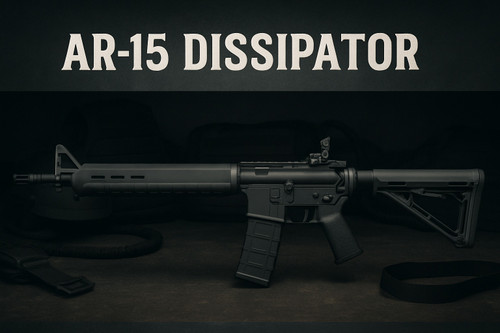
 Pro Armory Editorial Team
Pro Armory Editorial Team
